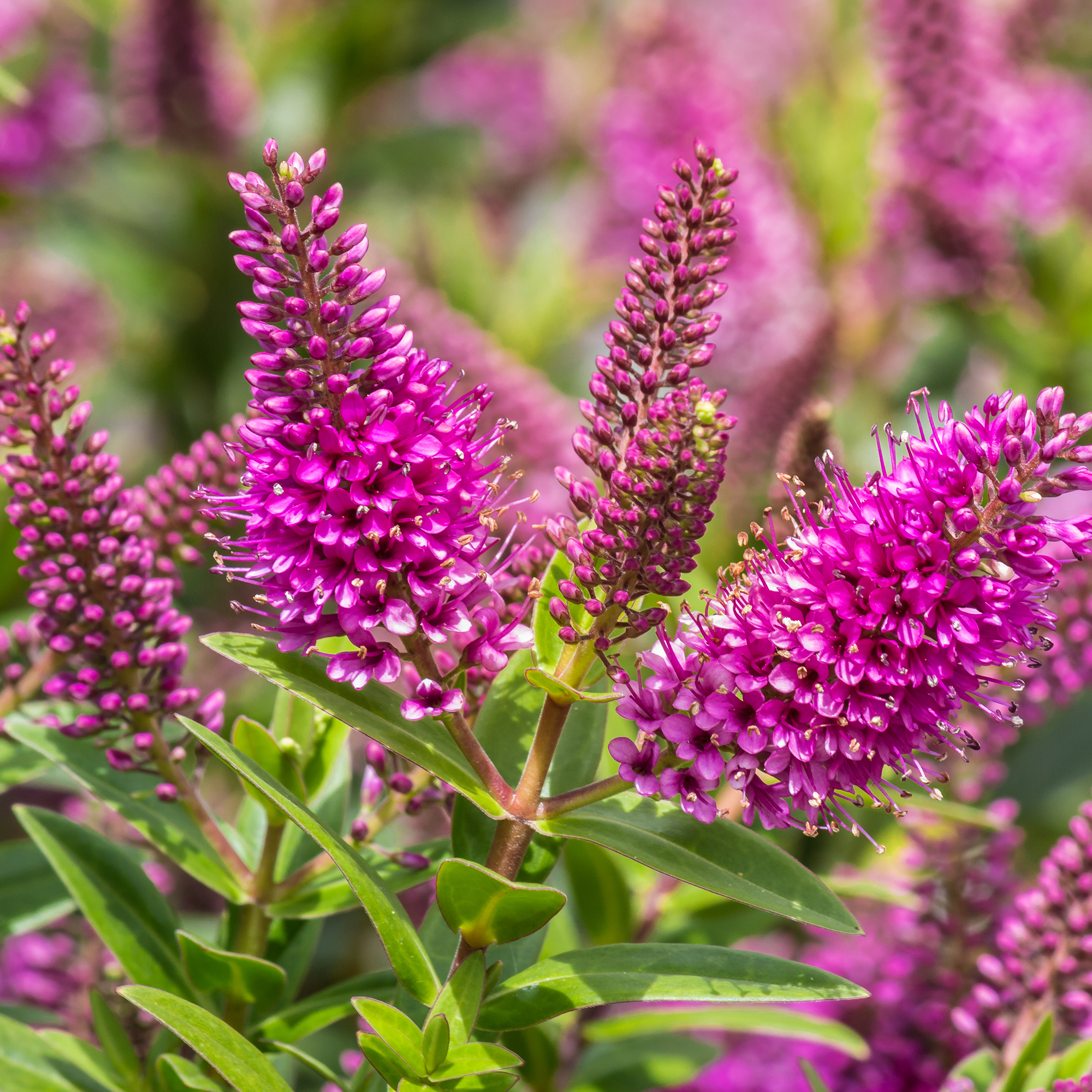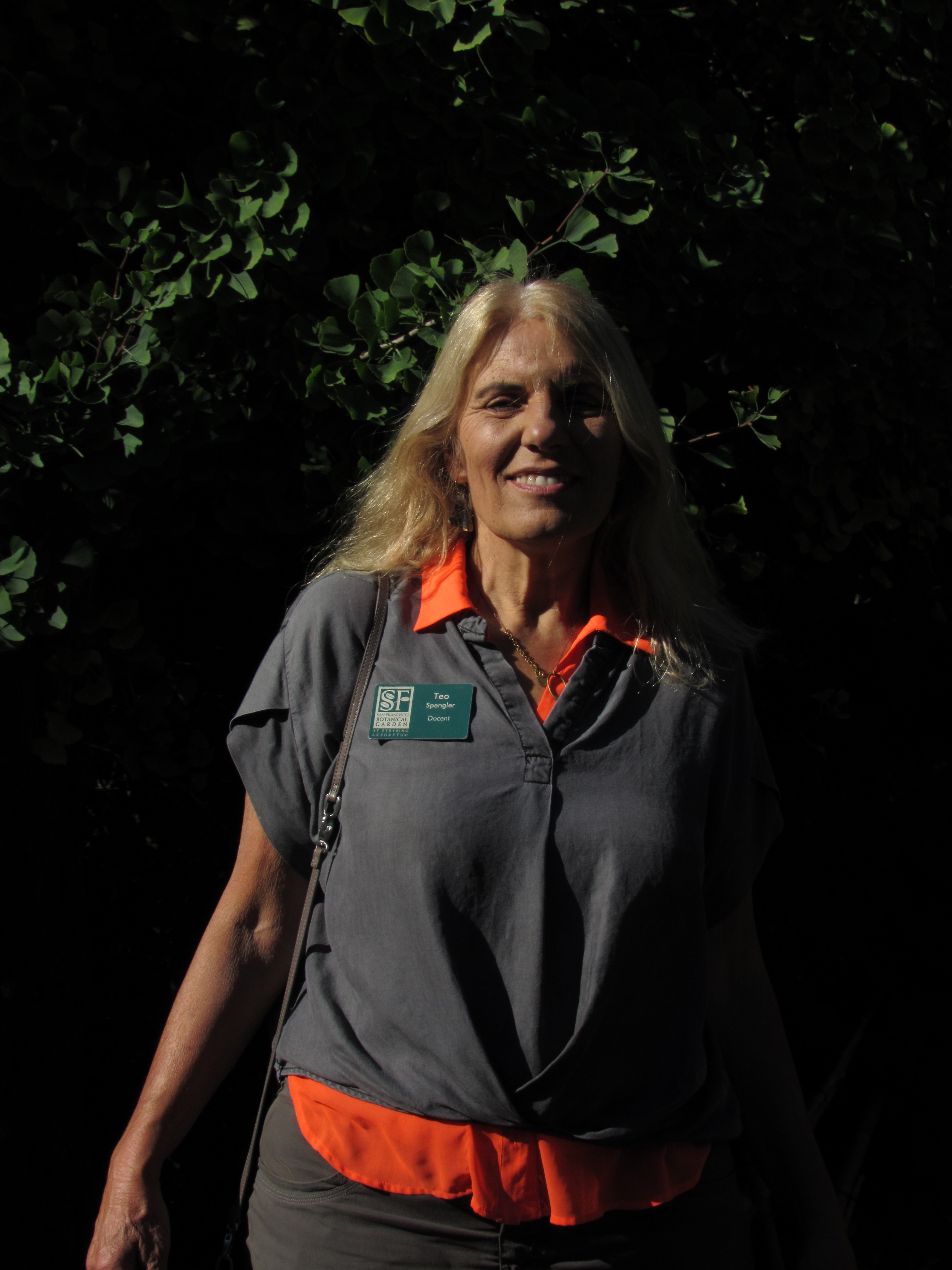Hebe Shrubs: Growing And Planting Hebes In The Garden
For bright spiky summer blooms and shiny year-round greenery, plant hebe in a sunny spot and watch the influx of pollinators.


How To Grow And Care For Hebe Shrubs In The Garden
Have you ever heard of the plant called hebe?
Hebes are attractive fast-growing evergreen shrubs that produce spikes of flowers in the summer - red, purple, white, lavender-blue, or pink.
Hebe shrubs, or veronicas as they are currently called, are sun-loving, long-flowering plants whose flowers attract bees and other pollinators.
QUICK FACTS
- Botanical name: Veronica ssp or Hebe ssp
- Height: To 6 feet tall
- Spread: To 5 feet wide
- Sun exposure: Prefers full or partial sun
- Soil requirements: Well-draining
- Hardiness zones: 7-11
- When to plant: Spring or fall
Hebe Care
Flowering hebes are easy to grow and work in many places in the garden. They are long-blooming and ideal for containers, edging, borders, and rock gardens. The key is to plant hebe bushes in an appropriate location and provide good cultural care.
- Light
- Hebes are sun-loving plants. They grow best in sites with a sunny exposure. Full sun or partial sun work well.
- Water
- Hebe bushes are drought tolerant, but that doesn’t mean they don’t need irrigation. Provide them with ample water on a weekly basis if you want them to be healthy and thrive.
- Temperature & Humidity
- Hebes don’t mind cold temperatures as long as winter doesn’t include heavy frosts or a deep freeze. This type of cold will damage the shrubs. Generally, flowering hebes are happy in an area with warm summer weather and mild winter weather.
- Soil
- Plant your hebes in moderately fertile, fast-draining soil. These flowering plants will not thrive in damp, waterlogged, or wet soil and will quickly die in heavy clay soil. Chalky or alkaline soils are fine.
- Fertilizer
- Little or no fertilizer is required for hebes. If you want to fertilize them, use just a little evergreen-type fertilizer.
- Problems, Pests & Diseases
- Black spots, powdery mildew, and other fungal issues can show up on a hebe shrub. Remove diseased leaves and check on your cultural conditions. If soil is not well-draining the plant can be subject to root rot.
How & When to Plant Hebe Shrubs
Plant container hebe shrubs in garden beds or containers in spring after all chance of frost is past. Alternatively, you can grow hebe shrubs from seed but it will be a couple of years before the seedlings will bloom in the garden.
Growing Hebes in Pots
Hebes grow well in containers. It’s easier to opt for smaller varieties as container plants.
Be sure to know the mature size of the variety you plant since this can impact the size of the container. Get a container that has adequate drainage holes and use a potting mix that drains well. Select a terra cotta pot if possible since this encourages excess moisture to evaporate.
Gardening tips, videos, info and more delivered right to your inbox!
Sign up for the Gardening Know How newsletter today and receive a free copy of our e-book "How to Grow Delicious Tomatoes".
Repotting
Hebe shrubs should be repotted every few years as they outgrow their pot. Select a pot several inches larger than the former one.
Pruning Hebe
- Deadheading hebes is a good idea as long as you take care not to remove flowers and buds.
- In addition, you should prune mature hebe bushes after they bloom. Cut back each stem that had bloomed by about half. This will keep the flowering hebes full and bushy.
- If you inherit old plants that are not in good shape, trim them back severely to rejuvenate them. Even if only leafless stems remain, the hebes will resprout.
Hebe Propagation
Hebe shrubs are easily propagated by stem and branch cuttings. If you are trimming the plant severely, use the clippings for cuttings. You can also take cuttings in late summer, making the cuts below leaf joints.
Overwintering
Check the hardiness zone of the cultivar before planting. Most hebes are hardy to USDA zone 7. In an appropriate region, the hebe shrubs can winter outside. If you live in a region where the temperature drops to freezing in the winter, consider wrapping your youngest shrubs in early winter. If your hardiness zone is below USDA zone 7, plant the hebes in containers and overwinter them inside the house or garage.
Hebe Varieties
There are some 75 species in the hebe genus. Most are evergreen shrubs but some are small trees. Most of these varieties are native to New Zealand and Australia. There are also many cultivars. A few popular cultivars include:
Hebe 'Variegata': offers variegated green/ivory leaves and purple flower spikes to 5 feet tall.
Hebe 'Western Hills': with silvery leaves and white or pale purple blossoms.
Hebe 'Red Edge': offers blue-green leaves and brilliant maroon flowers
Frequently Asked Questions
Where Is the Best Place to Plant a Hebe?
The ideal place to plant a flowering hebe would be a site that is wind-protected but sunny. Hebes need some sun and do best with a lot of sun, but in hot-summer regions, a little afternoon shade is preferable. The ideal soil is fertile, well-draining loam. Plant them individually or in mass.
Do Hebes Lose Their Leaves in Winter?
Hebes are evergreens. Although especially cold winters might kill the plants, in normal conditions in USDA hardiness zones down to zone 7, hebes do not lose their leaves in winter.

Teo Spengler is a master gardener and a docent at the San Francisco Botanical Garden, where she hosts public tours. She has studied horticulture and written about nature, trees, plants, and gardening for more than two decades. Her extended family includes some 30 houseplants and hundreds of outdoor plants, including 250 trees, which are her main passion. Spengler currently splits her life between San Francisco and the French Basque Country, though she was raised in Alaska, giving her experience of gardening in a range of climates.
-
 Looking For Plants To Give You The Soft And Fuzzies? Try These 5 Fuzzy Leaf Plant Options
Looking For Plants To Give You The Soft And Fuzzies? Try These 5 Fuzzy Leaf Plant OptionsLovers of texture, drama, silver foliage and tactile plants will adore these special sensory garden additions. These fuzzy leaf plant options will leave you all aglow
By Susan Albert
-
 Get Ready For A Summer Of Hummers! Grow These Full Sun Hummingbird Plants and Flowers
Get Ready For A Summer Of Hummers! Grow These Full Sun Hummingbird Plants and FlowersIf you’re lucky enough to enjoy a sunny backyard, make sure you are maxing out on your pollinator opportunities and grow these full sun hummingbird plants and flowers
By Tonya Barnett